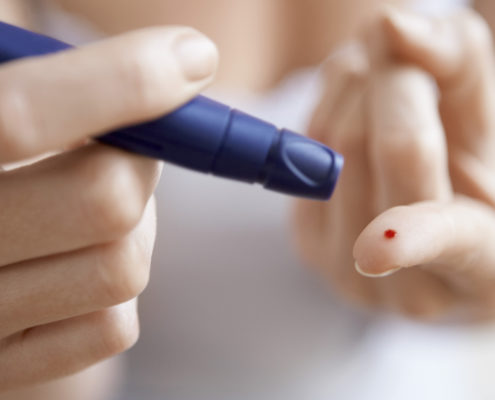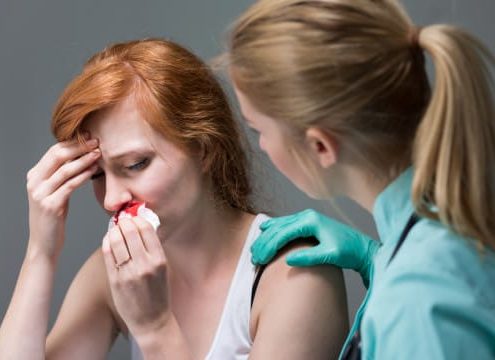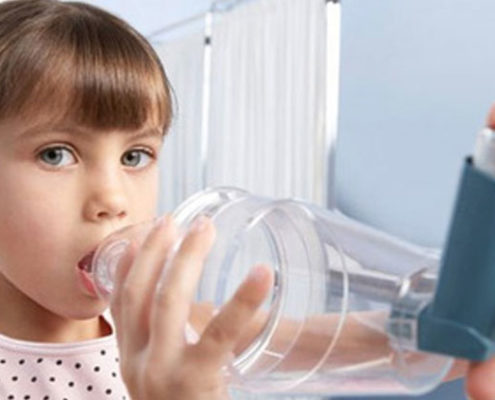Top Seven Safest and effective antibiotics
Certain natural substances have antibacterial properties, but which are safe to use, and when should a person use them?
Prescription antibiotics, such as penicillin, have helped people to recover from otherwise fatal diseases and conditions since the 1940s.
However, people are also turning to natural antibiotics for treatment.
According to the NHS, 1 in 10 people experiences side effects that harm the digestive system after taking antibiotics. Around 1 in 15 people are allergic to this type of medication.
In this article, we look at the evidence behind seven of the best natural antibiotics. We also discuss which to avoid, and when to see a doctor.
Seven best natural antibiotics
Garlic may be an effective treatment against bacteria.
The scientific jury is still out concerning natural antibiotics. While people have used remedies like these for hundreds of years, most treatments have not been thoroughly tested.
However, some show promising results under medical review, and further studies are underway.
With an ongoing increase in drug-resistant bacteria, scientists are looking to nature when developing new medications.
Here, we examine the science behind seven natural antibiotics.
1. Garlic
Cultures across the world have long recognized garlic for its preventive and curative powers.
Research has found that garlic can be an effective treatment against many forms of bacteria, including Salmonella and Escherichia coli (E. coli). Garlic has even been considered for use against multi-drug resistant tuberculosis.
2. Honey
Since the time of Aristotle, honey has been used as an ointment that helps wounds to heal and prevents or draws out infection.
Healthcare professionals today have found it helpful in treating chronic wounds, burns, ulcers, bedsores, and skin grafts. For example, results of a study from 2016 demonstrate that honey dressings can help to heal wounds.
The antibacterial effects of honey are usually attributed to its hydrogen peroxide content. However, manuka honey fights off bacteria, though it has a lower hydrogen peroxide content.
A 2011 study reported that the best-known type of honey inhibits approximately 60 kinds of bacteria. It also suggests that honey successfully treats wounds infected with methicillin-resistant Staphylococcus aureus (MRSA).
Antibacterial properties aside, honey may help wounds to heal by providing a protective coating that fosters a moist environment.
3. Ginger
The scientific community also recognizes ginger as a natural antibiotic. Several studies, including one published in 2017, have demonstrated ginger’s ability to fight many strains of bacteria.
Researchers are also exploring ginger’s power to combat seasickness and nausea and to lower blood sugar levels.
4. Echinacea
Echinacea has been used to treat infections for many years.
Native American and other traditional healers have used echinacea for hundreds of years to treat infections and wounds. Researchers are beginning to understand why.
A study published in the Journal of Biomedicine and Biotechnology reports that extract of Echinacea purpurea can kill many different kinds of bacteria, including Streptococcus pyogenes (S. pyogenes).
S. pyogenes is responsible for strep throat, toxic shock syndrome, and the “flesh-eating disease” known as necrotizing fasciitis.
Echinacea may also fight inflammation associated with bacterial infection.
5. Goldenseal
Goldenseal is usually consumed in tea or capsules to treat respiratory and digestive problems. However, it may also combat bacterial diarrhea and urinary tract infections.
In addition, results of a recent study support the use of goldenseal to treat skin infections. In a lab, goldenseal extracts were used to prevent MRSA from damaging tissue.
A person taking prescription medications should check with a doctor before taking goldenseal, as this supplement can cause interference.
Goldenseal also contains berberine, an important component of natural antibiotics. This alkaloid is not safe for infants, or women who are pregnant or breastfeeding.
6. Clove
Clove has traditionally been used in dental procedures. Research is now finding that clove water extract may be effective against many different kinds of bacteria, including E. coli.
7. Oregano
Some believe that oregano boosts the immune system and acts as an antioxidant. It may have anti-inflammatory properties.
While researchers have yet to verify these claims, some studies show that oregano is among the more effective natural antibiotics, particularly when it is made it into an oil.
Risks of natural antibiotics
Just because something is labeled natural, it is not necessarily safe.
The amounts and concentrations of active ingredients vary among brands of supplements. Read labels carefully. A person should also inform their healthcare provider if they plan to take these supplements.
While cooked garlic is usually safe to consume, research suggests that taking concentrated garlic may increase the risk of bleeding. This can be dangerous for people facing surgery or taking blood thinners.
Garlic concentrates may also reduce the usefulness of HIV medications.
Certain products should be avoided, including colloidal silver. This substance consists of microscopic pieces of silver suspended in water.
Colloidal silver has been recommended as a treatment for a variety of diseases, including the bubonic plague and HIV. However, according to the National Center for Complementary and Integrative Health, it can be dangerous, and no credible studies back up these uses.
Taking colloidal silver supplements may interfere with the effectiveness of antibiotics and medication used to treat an underactive thyroid gland.
Silver can also build up in the body and turn the skin bluish-gray. This condition is called argyria and is permanent in most people.
Do you bleed when you blow your nose?
Epistaxis, or a nosebleed, is generally caused by a broken blood vessel in the nose or sinuses. Bleeding from the nose, especially when blowing it, is very common and usually not a cause for concern.
An estimated 60 percent of people experience nosebleeds but only around 6 percent of cases require medical attention.
It can be hard to determine what causes broken blood vessels in the nose. However, there are several factors that may contribute to or cause the nose to bleed when blowing it.
Causes
Blood appearing when blowing the nose may be caused by dry nasal cavities, an injury, nose picking, or blowing too hard.
Common causes of blood appearing when blowing the nose include:
* blowing the nose too hard or too frequently
* inflammation or mucosal irritation caused by infection or allergies
* very dry nasal cavities or sinuses
* prolonged inhalation of very dry or cold air
* nose picking
* antibiotic medications
* blood thinning medications, such as warfarin, aspirin, and clopidogrel
* injury to the nose or face
* environmental factors, such as humidity or being at a high altitude
* abnormalities in the septum, which is the wall that separates the nostrils
Less common causes of nosebleeds include:
* nasal, sinus, face, or eye surgery
* foreign bodies in the nose
* nasal polyps or tumors
* inflammatory conditions
* high blood pressure
* holes in the septum
* blood disorders, such as low blood platelet levels and anemia
* conditions affecting the blood vessels, such as arteriosclerosis
* leukemia, a type of blood cancer conditions affecting the immune system
* liver or kidney problems
* scurvy, or severe vitamin C deficiency
* chemotherapy
* congestive heart failure
* chronic use or overuse of certain herbal supplements, most commonly vitamin E and gingko biloba
* exposure to toxic chemicals
* use of illicit drugs, especially cocaine
Some hereditary or genetic conditions that cause abnormal bleeding can also lead to blood appearing when the nose is blown. These conditions include:
* von Willebrand disease
* hereditary hemorrhagic telangiectasia
* factor VIII deficiency (hemophilia A)
* factor IX deficiency (hemophilia B)
* factor XI deficiency
Treatment options
Gently and firmly pinching the nose may be a recommended treatment option for bleeding noses.
In most cases, a nosebleed or minor bleeding from the nose eventually stops on its own after a few minutes.
There are a few at-home remedies, however, that may encourage nosebleeds to stop earlier or reduce the amount of bleeding.
Basic treatment options for bleeding noses include:
* laying down flat with the head tilted backward to reduce blood flow to the nose
* relaxing and breathing through the mouth
* not touching or picking the nose once it has stopped bleeding
* laying down or resting in a seated position for a few hours after the bleeding has stopped
* gently but firmly pinching the nose, especially if the site of the bleeding is known
Around 90 percent of nosebleeds occur in the front bottom portion of the septum, the fleshy wall that divides the nostrils.
Prolonged or repetitive nosebleeds, or those caused by an underlying medical condition, require medical attention and treatment.
If nosebleeds are severe, a person may require more aggressive treatment to prevent extensive blood loss.
Medical treatment options include:
* nasal packing, where sterile cotton pads or dressings are packed into the nostril to limit bleeding
* topical medications to limit bleeding, known as local hemostatic agents
* topical antiseptic and antibiotic ointments and creams
* sealing a blood vessel shut using an electrical device or chemical such as silver nitrate
* surgery where the blood vessel is packed with sterile materials to block it off
* surgery where the blood vessel is tied together to seal it shut
* clotting medications
* blood transfusions
Prevention tips
In many cases, there is no specific way to avoid nosebleeds, but there are some things that may help prevent or reduce the risk of them.
Blowing the nose gently and not picking at the skin can usually prevent minor bleeding.
Other tips for preventing bleeding when blowing the nose include:
* using over-the-counter nasal decongestant sprays or pills to treat allergies
* applying over-the-counter nasal lubricants or petroleum jelly in the nostrils to prevent dryness
* using saline sprays to prevent dryness
* avoiding picking the nose, especially scabs
* avoiding blowing the nose aggressively or too frequently
* protecting the nose from cold or dry air by using a scarf
* not overusing or misusing non-steroidal anti-inflammatory medications (NSAIDs) and antibiotics
* reducing inflammation and nasal congestion by using a nasal or sinus rinse
* avoiding exposure to toxic chemicals
* not using illicit drugs, especially cocaine
One example of a nasal rinse is a Neti pot. These are commonly available online and can be used at home.
When to see a doctor
If nosebleeds are chronic or repetitive, a healthcare professional should be consulted.
People should seek medical attention anytime a nosebleed does not stop naturally within 20 minutes. They should also seek medical attention if it does not respond to initial treatments, such as applying pressure.
Although nosebleeds tend to be harmless, severe or prolonged nosebleeds can cause serious blood loss, especially in:
* young children
* people over the age of 65
* people with immune conditions
It is also important to talk with a doctor about chronic or repetitive nosebleeds.
Chronic nosebleeds can be a sign of underlying medical conditions, such as blood or inflammatory disorders. Repetitive nosebleeds can also be a sign of nasal deformities or tumors, especially when they only involve one nostril.
People should also seek medical attention if nosebleeds are accompanied by any of the following symptoms:
* pain or tenderness around the eyes
* stuffy nose that continues to get worse and will not clear
* mucus that drips in the back of the throat
* change in the appearance of the nose or surrounding area
* pus in the nose
* chronic watery eyes
* reduced sense of smell
* change in vision
* enlarged lymph nodes in the neck
* pain or pressure in the ears
* hearing loss
* numbness in the face
* loosening, numbness, or pain in the teeth
* difficulty opening the mouth
* headache
Outlook
Bleeding from the nose when blowing it is a common experience. It is usually due to inflamed or damaged nasal tissues and blood vessels, and is not a cause for concern.
Nosebleeds are generally harmless, and stop on their own or after applying gentle pressure to the area.
Severe or repetitive nosebleeds can be a sign of an underlying medical condition that may require treatment, such blood disorders or obstructions.
People should speak with a doctor about severe or repetitive nosebleeds, especially when accompanied by additional symptoms.
Prevention of Type 1 diabetes.
Does the gut hold the key to prevention?
Targeting specific microbiota in the gut could be one way to protect against type 1 diabetes, a new study concludes.
Researchers from the University of Queensland in Australia have found distinct gut microbiota alterations in rodents and humans that are at high risk of type 1 diabetes.
Furthermore, the scientists found that these gut microbiota alterations were a result of genetic susceptibility to type 1 diabetes, as well as changes in immune system functioning.
Researchers findings suggest that targeting the gut microbiota might have the potential to prevent type 1 diabetes.
In type 1 diabetes, the immune system mistakingly attacks and destroys the beta cells, or those that produce insulin, of the pancreas. As a result, not enough insulin is made, and this can lead to an increase in blood sugar levels.
Type 1 diabetes accounts for around 5 percent of all diabetes cases, and onset of the condition is most common in childhood, adolescence, and young adulthood.
Type 1 diabetes and the gut
Although the precise cause of type 1 diabetes remains unclear, it is known that those who possess certain genetic variants are at greater risk of the condition.
For example, susceptibility to type 1 diabetes is higher among individuals who have variants of the human leukocyte antigen complex, such as the HLA-DQA1, HLA-DQB1, and HLA-DRB1 genes. These are genes that play a role in immune system functioning.
Research also suggested that changes in gut microbiota — or the population of microorganisms that reside in the intestine — play a role in the development of type 1 diabetes.
However it is unclear whether such changes in gut microbiota are driven by genetic susceptibility to type 1 diabetes or other factors. The team sought to find out with the new study.
First, they conducted an analysis of non-obese mouse models that were genetically susceptible to type 1 diabetes. They looked at whether the rodents’ gut microbiota differed to that of mice that were protected against type 1 diabetes, and, if so, whether genetic susceptibility played a role.
The results of the analysis revealed that the mouse models with genetic susceptibility to type 1 diabetes demonstrated alterations in gut microbiota composition. Specifically, they showed reductions in Ruminococcus, Lachnospiraceae, and Clostridiales bacteria.
What is more, the scientists found that these alterations were associated with changes in immune system functioning.
The study also found that using immunotherapy to target T cells — which are a type of white blood cell — related to type 1 diabetes led to significant changes in the gut microbiota of rodents.
A route for prevention?
The researchers were able to confirm their findings in a study of humans with genetic susceptibility to type 1 diabetes.
Researchers now plan to assess clinical trials of immunotherapies for type 1 diabetes, with the aim of finding out whether the treatment led to changes in gut microbiota.
If so, the researchers say that it could then be possible to protect against type 1 diabetes by restoring protective gut microorganisms.
“This research has show there is a genetic component to microbiota and the immune response involved in regulating it. This means that changes in the microbiota in type 1 diabetes occur before symptoms develop, and are not just a side effect of the disease.
Therapies targeting the microbiota could therefore have the potential to help prevent type 1 diabetes in the future.

Woman Performing Blood Test on Herself
Study shows a partner’s touch relieves pain.
Lovers’ heartbeats and respiration patterns tend to synchronize when the partners are simply in each other’s presence. But what does the role of touch play in this synchronization, and what happens when one of the partners is experiencing pain?
Have you ever noticed that when you walk alongside your partner, your steps tend to synchronize? Or that when you speak to a close friend, you tend to adopt the same posture as them?
The scientific name for this is “behavioral synchrony,” and it refers to the human ability to synch up with other people for the sake of living in a society.
Some studies have shown that people are not only able to synchronize their behavior, but that they can also sync up their physiology.
“Interpersonal synchronization” can manifest in various ways. For example, when people watch the same movie, their brain activity synchronizes. Similarly, when lovers stare into each other’s eyes, their hearts quite literally beat as one.
New research carried out by scientists at University of Colorado (CU) Boulder explores the role of touch in driving interpersonal synchronization in the context of pain.
The team was led by Pavel Goldstein, a postdoctoral pain researcher in the Cognitive and Affective Neuroscience Lab at CU Boulder, and the findings were published in the journal Scientific Reports.
Studying pain and touch in couples
Dr. Goldstein and colleagues gathered 22 heterosexual couples for their study, who were all aged between 23 and 32.
The researchers asked the couples to participate in a range of tests that replicated the experience of being in a delivery room.
The female participants were assigned the role of “pain receiver,” while the men were “pain observers.”
Dr. Goldstein and team recorded the participants’ respiration rates and heartbeats using an electrocardiogram under both pain and no pain conditions, as well as in both touch and no touch conditions.
Under the no pain condition, the couples either sat together without touching, sat together while holding hands, or were in separate rooms. In the pain scenario, all three situations were repeated, but the woman was subjected to “mild heat pain” for 2 minutes.
Touch restores synchronicity, eases pain
The study confirmed previous findings and showed that couples do synchronize physiologically just by being in each other’s company.
When the woman was subjected to pain and her partner did not touch her, that physiological coupling was considerably diminished. However, when the male partner held her hand, heart rates and respiration rates synched up again, and the woman’s pain was reduced. Additionally, holding hands increased the male partner’s empathy.
Overall, touch seems to play a key role in interpersonal synchronization, as it increased physiological coupling regardless of whether the woman was in pain or not.
This confirms Dr. Goldstein’s previous research, in which he showed that the more empathetic a man is toward a woman, the less pain the woman feels.
It appears that the more physiologically synched we are, the more our pain subsides. However, the researchers do not know whether lower-intensity pain increases interpersonal synchronicity, or whether it is the other way around.
“It could be that touch is a tool for communicating empathy, resulting in an analgesic, or pain-killing, effect,” Dr. Goldstein says. Interpersonal coupling may also enhance the analgesic effects of touch using the autonomic nervous system, the authors hypothesize.
Dr. Goldstein also supposes that interpersonal synchronization may affect a brain region called the anterior cingulate cortex, which has been associated with decision-making, social interactions, pain perception both in oneself and in others, and empathy.
But more research is needed, he concedes, to understand the precise mechanism by which a partner’s touch helps to diminish pain.
Limitations of the study include the fact that it did not examine same-sex couples or the effect of touch on men experiencing pain.
How and when to take a pregnancy test
Pregnancy tests help women to determine if they are pregnant. These tests work by picking up on markers in urine or blood that indicate pregnancy.
Knowing which type of pregnancy test is most suitable, and understanding how to use them, helps ensure results are accurate.
Whether taken at home or in a doctor’s office, being informed about the pregnancy test process makes it easier to understand what the results mean, and what to do next.
Types of pregnancy test
There are two main types of pregnancy test available: urine tests and blood tests.
Urine tests
Urine tests can be taken at home or at the doctor’s office. They detect the presence of the pregnancy hormone, human chorionic gonadotropin (hCG).
The hCG hormone circulates in a woman’s blood once a fertilized egg has attached to the uterus wall. This usually happens 6 days after fertilization.
According to the American Pregnancy Association, levels of hCG double every 2 to 3 days, peak by 8 to 11 weeks of pregnancy, and then begin to level off. HCG can usually be detected by a urine test 12 to 14 days after conception.
Home pregnancy test
Home pregnancy tests can be purchased in a pharmacy or drugstore. They normally cost less than $20 and are easy to use. If used correctly, they give excellent results.
Results are usually visible within 3 to 10 minutes or sometimes sooner.
Clinical urine test
Clinical urine tests are performed at a doctor’s office. Like home tests, they also look for the presence of the hCG hormone in urine.
Although they produce the same level of accuracy, tests performed in a clinical setting usually avoid some of the errors that can happen with home tests.
Blood tests
Although less common than urine tests, blood tests to detect hCG levels are available. These are always carried out at the doctor’s office, and results take longer than urine test results.
Blood tests are usually more expensive but some can be taken earlier than urine tests to determine results. The two types of blood tests are:
* Qualitative hCG blood test: This checks hCG levels, giving a “yes” (pregnant) or “no” (not pregnant) result. They can detect hCG levels around 11 days after conception.
* Quantitative hCG blood test: This is able to measure specific levels of hCG, even if levels are low.
Further tests may be needed if results aren’t as expected. For example, if the hCG level is higher or lower than it should be for the estimated pregnancy stage.
This process can help indicate ectopic pregnancy, miscarriage, or a more accurate due date.
Online tests
Several websites and phone applications have tests that claim to calculate the likelihood of being pregnant. These can be used as a source of information, but should not replace real pregnancy tests.
Who should use a pregnancy test?
Common early indicators of a possible pregnancy include nausea, vomiting, and excessive fatigue.
Any woman of childbearing age, who suspects she may be pregnant, should use a pregnancy test. In particular, women who recently had unprotected sex should consider using a pregnancy test.
Some signs of early pregnancy that should be followed up with a pregnancy test include:
* a missed period
* enlarged, tender, or swollen breasts
* fatigue
* increased urination
* nausea
* vomiting
How to use pregnancy tests
For a clinical urine test, the doctor will ask for a sample of urine. This can be tested immediately.
Blood tests require a sample of blood to be drawn and sent for testing.
Home pregnancy tests are simple to use. It is important to follow the instructions closely to get the most accurate result.
Most brands can be used on the first day of a missed period, but some more sensitive tests can be used sooner. Some clinical tests can also be taken earlier than this.
In general, home pregnancy urine tests involve one of the following methods:
* urinating directly onto the test stick
* urinating into a cup and dipping the test stick in
* urinating into a cup and using a dropper to drop urine onto the test window
Many manufacturers recommend taking two home tests to confirm results. This is because hCG levels may be too low to be detected at first. To ensure the most accurate results, it is best to wait a few days to 1 week between the two tests.
Accuracy
Many home pregnancy tests claim to be accurate up to 99 percent of the time. Clinical tests can be even more accurate.
However, using them correctly is vital. Several studies suggest incorrect use of tests has led to many women reporting false results.
Most tests can be used on the first day of a missed period but it’s advisable to wait 1 week after a missed period for accuracy.
This is because 10 to 20 percent of pregnant women won’t detect their pregnancy on the first day of their missed period. This can be due to many women having irregular periods, or miscalculating when their period is due.
In addition, a number of other factors play a role in the accuracy of results, including:
* time of day the test is taken
* length of time after conception
* when ovulation occurs
* how quickly the fertilized egg implants
* how well instructions are followed
* how sensitive the test is
What do the results mean?
If a home pregnancy test reads positive, it is important for a doctor to confirm the results with a clinical test.
Results of a pregnancy test are either positive or negative. If taking a clinical test, the doctor will explain what the results mean. If using a home test, it’s important that women refer to the test instructions to ensure they understand what the colors, symbols, or words indicate.
Positive result
A positive result indicates pregnancy, even if the color, symbol, or words on the test window are faint. It’s a good idea to confirm this result by taking a clinical test.
Very rarely, a false-positive result occurs. This means the woman taking the test is not pregnant, despite the test indicating she is. False-positives can occur due to:
* early miscarriage
* certain medications
* ovarian tumors
* liver disease
* kidney failure
* expired test kits
Negative result
A negative result means pregnancy is unlikely. However, false-negative results are common.
These are where pregnancy may still occur but is not yet showing up on the test. They can occur for a number of reasons, including:
* incorrectly taking the test
* testing too soon
* testing with urine that is too diluted
* not waiting long enough for results
* expired or faulty test
Retesting within a week is advisable for all test results. This is particularly important if a woman is experiencing some of the symptoms of early pregnancy or if the test result is negative.
When to see a doctor
A woman should always consult her doctor if she has any queries about the pregnancy or test results. If the home pregnancy test is positive, a doctor can confirm this with a clinical test and begin to arrange prenatal care.
If a home pregnancy test is negative but a woman’s periods don’t resume, she should consult a doctor to determine the cause of the missed periods.
Early-life asthma may contribute to childhood obesity
Asthma affects millions of children in the United States, and so does obesity. A new study may have found a link between the two, as early-life asthma may contribute to the development of childhood obesity.
New research suggests that asthma may increase the risk of childhood obesity.
It is estimated that asthma affects around 1 in 10 U.S. children.
As for childhood obesity, the Centers for Disease Control and Prevention (CDC) report that 12.7 million children in the U.S. – or approximately 17 percent – are obese.
Childhood obesity and asthma are often found to occur together, but existing research has not yet clarified whether asthma actually contributes to the childhood obesity “epidemic.”
New research from the University of Southern California (USC) in Los Angeles aims to fill this research gap by examining the effects of asthma and asthma medication on childhood obesity.
Assessing the link between early-life asthma and childhood obesity
The researchers examined the medical records of 2,171 non-obese children between 5-8 years old.
These children were enrolled in the Southern California Children’s Health Study (CHS) and were clinically followed for 10 years.
CHS is a large-scale, long-term, detailed study of the lasting effects of air pollution on the respiratory and metabolic health of children.
The USC researchers examined 10 years’ worth of data collected in the CHS, and they also performed a replication analysis on an independent sample of 2,684 CHS children. This latter cohort was followed from the average age of 9.7 years to 17.8 years.
During this time, researchers measured the children’s height and weight annually, categorizing them into normal, overweight, and obese. Children were deemed overweight or obese if their body mass index (BMI) was at or above the 85th and 95th percentile, respectively, compared with the BMI standards set by the CDC.
Researchers team assessed the children’s asthma using the physician’s diagnosis as reported by the children or by their parents.
The parents also filled in complex questionnaires on sociodemographic factors and smoking exposure at home or in utero, as well as physical activity patterns and history of respiratory illness.
The scientists used Cox regression to evaluate the associations between asthma and the incidence of obesity during the follow-up period.
Children with asthma 51 percent more likely to become obese
At the beginning of the study, over 18 percent of the children were overweight and over 13 percent had been diagnosed with asthma.
During the follow-up period, 15.8 percent of children developed obesity.
After statistical adjustments, the researchers found that early childhood asthma did contribute to the development of obesity in subsequent years, mainly during early childhood and adolescence.
Compared with non-obese, asthma-free children, the non-obese children who did have asthma were 51 percent more likely to develop obesity during follow-up. The results stayed the same following sociodemographic adjustments and adjustments for other variables.
Additionally, children with a history of wheezing were at a 42 percent higher risk of developing obesity.
The age of asthma onset did not seem to influence the obesity risk.
Regarding the link between the use of asthma medications and obesity, the researchers made another interesting discovery. They found that the use of asthma rescue medications, such as an asthma inhaler, significantly lowered the risk of obesity. These results were independent of physical activity.
Significance of the study
The authors note that theirs is one of the few studies to link early-life asthma with an increased risk of developing obesity.
Some of the study’s limitations include the fact that the information was self-reported, and that the scientists did not have access to sufficient information regarding diet or physical activity patterns.
Frank Gilliland, the study’s senior author, points out that a combination of asthma and obesity can trigger other metabolic diseases in adulthood, including prediabetes and type 2 diabetes.
Children who have asthma are often overweight or obese, but the scientific literature has not been able to say asthma causes obesity.
However, our study and that of others support the finding that having asthma in early childhood may lead to increased risk of childhood obesity.
Although it could be that the respiratory problems prevent children with asthma from playing and exercising as much as healthy children, it is interesting, the authors note, that this study accounted for physical activity yet still showed these results.
Early diagnosis and treatment of asthma may help prevent the childhood obesity epidemic. Part of the problem may be a vicious cycle where asthma and obesity negatively affect each other. Our results also suggest that asthma inhalers may help prevent obesity in children. Although this observation warrants further study, it is interesting that the correlation exists irrespective of physical activity and other asthma medication use.





